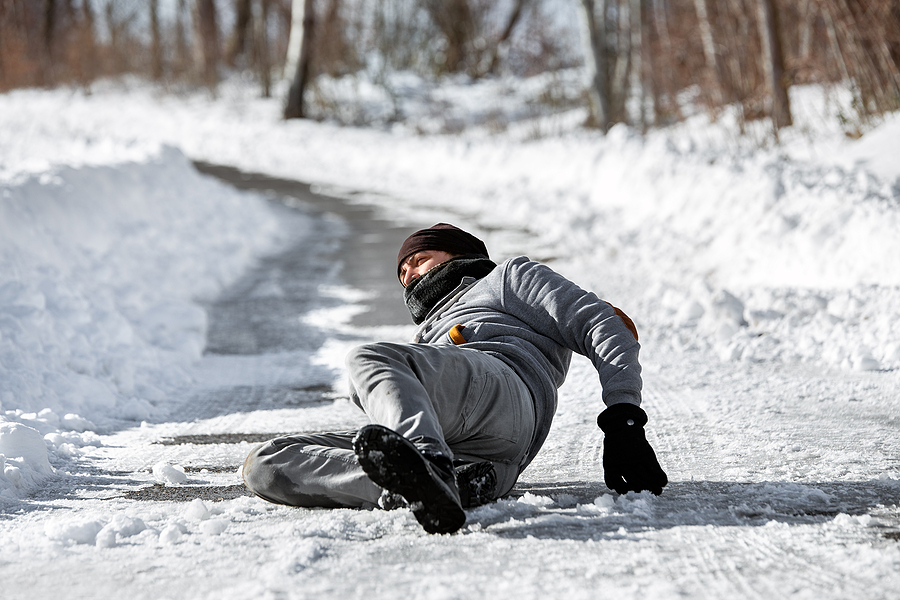
Avoid Winter Falls
Over the river and through the woods to Grandmother’s house we go. And when we get there, there’s slipping and sliding all the way up to the front door. Nothing can ruin your holiday spirit faster than a broken bone from a bad fall. One of the most common areas affected by slips and falls is the ankle.
The ankle is made of the tibia and fibula (both running down the leg), as well as the talus. It also contains multiple ligaments and tendons, all susceptible to injury. There are some important things you can do to help avoid injury this winter.
Get the Right Shoes
The right shoes can make all the difference this winter. Ice has very little surface grip because when your shoes step down on it, the very topmost layer melts, causing a slippery surface. Having shoes with high treads (lots of deep grooves in the bottom) can help you gain traction. Flat shoes with no tread will be unable to grip the ground, meaning you risk slipping and falling. High heels are also a no-no on ice. Take them with you and put them on once you are inside the venue.
Treat Walkways
The most logical way to avoid falling on ice is to avoid walking on ice, but this is easier said than done. Properly treating walkways is a key step. Ice can be avoided or it can be melted after it forms. To avoid ice, pre-treat with a liquid solution that coats the entire surface (make sure it’s environmentally safe though or you’ll be killing your lawn in the process).
You can also use ice melting products after the snow has fallen and frozen. Rock salt is a popular option, but it can cause damage to concrete and plants and is lethal to pets. Try something with less impact like Magnesium Chloride. If you can’t melt the ice, you can also avoid slipping by putting down rubber mats or sand.
Hands-Free/Penguin Walk
If you can’t avoid icy surfaces, then make sure you are walking correctly as you cross them. Work on your penguin walk. This means no hands in your pockets or full of extra items. Leave them free and slightly out from your sides to stabilize yourself. You also want to shuffle your feet more than pick them up and set them down. Lean forward and go slow; this keeps your weight over your front leg, giving you a better center of gravity.
Fall Gracefully
If you do fall, try to do it with some grace. Or at least with some proper form. DON’T stick your hands out in front of you to stop yourself. (The wrist and clavicle are also commonly broken from falls.) Tuck your head toward your chest and try to fall onto a big muscle such as your thigh or upper arm. These softer body parts have more insulation to avoid breaks from sudden jarring.
Get Urgent Care at the FAAWC
After a slip and fall on ice, if you experience any ankle pain, please go see your podiatrist immediately. Sprains, fractures, and full breaks can present with similar symptoms, and if you don’t treat your injury properly it could lead to problems down the road. The FAAWC keeps a limited number of appointments open each day for emergency visits. We also offer walk-in hours for any foot and ankle problem from 12 pm to 3 pm every Friday.
Slipping on the ice is no laughing matter. Be smart this winter and if you know you are prone to falling, maybe stay home until the ice melts.
Leave a reply